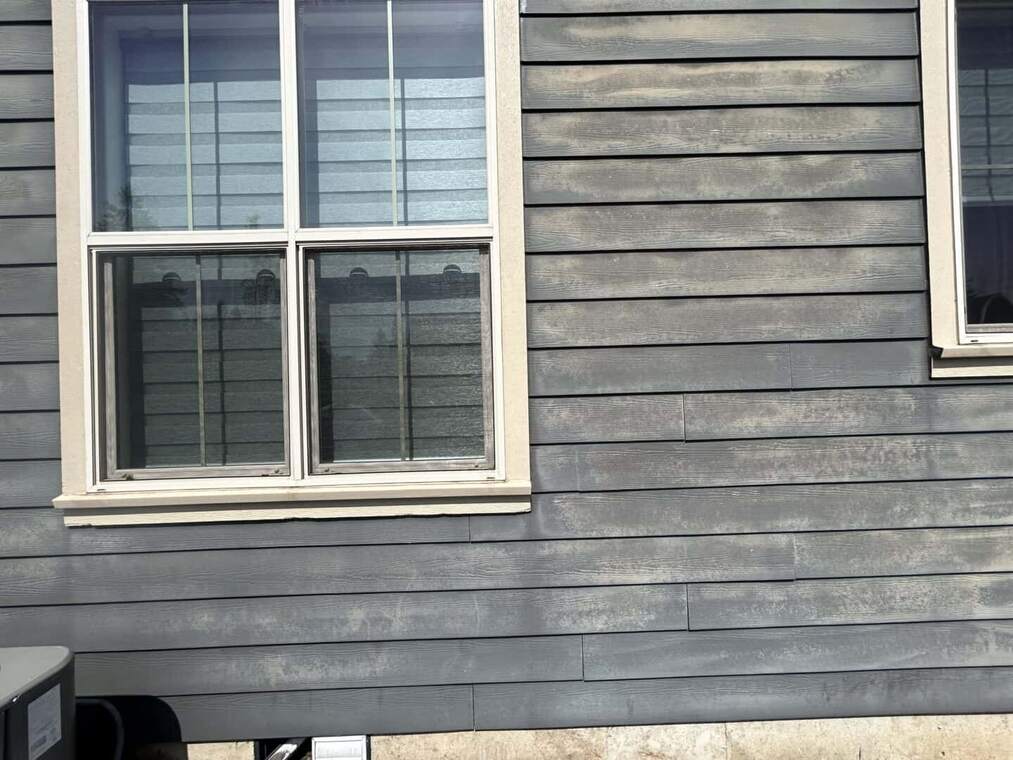The Most Common Paint Problems (And How to Prevent Them)

If your home’s exterior paint is peeling, bubbling, or fading, it’s not just an eyesore — it’s a warning sign. Paint is your home’s first line of defense against Texas weather, and when it starts to fail, bigger issues may not be far behind. Identifying the causes early can save you money, preserve your curb appeal, and protect your structure from long-term damage.
In this guide, we’ll break down the most common exterior paint problems and solutions that every homeowner should know. More importantly, we’ll explain why working with professional painters is key to preventing these issues in the first place.
Peeling or Flaking Paint
Peeling paint is one of the most common signs that something went wrong under the surface. It’s not just cosmetic — it’s usually the result of moisture, poor adhesion, or both. Once paint loses its grip, it allows water, air, and UV rays to penetrate the surface, causing even more damage over time.
You’ll often see this around:
- Wood trim and fascia boards
- Siding near the foundation
- Window frames and eaves exposed to weather
What causes it?
- No primer or the wrong type of primer
- Painting over dirty, damp, or glossy surfaces
- Moisture getting trapped behind the paint film
How to prevent it:
A professional will first inspect the surface for moisture intrusion. Then, they’ll sand, clean, and prime with the right bonding product. This process ensures that paint adheres correctly and lasts for years — not months. The quality of prep makes all the difference.
If you see flaking paint, don’t ignore it. It means the layers underneath have failed and need professional removal and repair.
Fading and Chalky Surfaces
When paint fades unevenly or leaves behind a powdery residue, it’s more than just age — it’s a breakdown in the paint’s protective qualities. This is especially common on homes in sunny, dry climates like Central Texas, where UV exposure is relentless year-round.
You’ll typically notice this on:
- South- and west-facing walls
- Areas without shade or overhangs
- Dark-colored paint exposed to direct sun
What causes it?
- Sunlight breaking down pigment and resin
- Use of low-quality or interior-grade paint
- Lack of UV protection in the coating formula
How to prevent it:
Professional painters use exterior-specific paints with built-in UV stabilizers, especially on sun-exposed surfaces. Light colors are more fade-resistant, but even dark shades can perform well when high-quality paint is applied correctly. Chalky surfaces also need proper cleaning and priming before repainting to ensure the new coat adheres fully.
If you’re seeing color loss or powdery residue on your siding, it’s a clear sign the coating has broken down. That means the surface underneath may be vulnerable.
Blistering and Bubbling
Blisters and bubbles in paint look minor at first but often point to deeper issues. They happen when air, moisture, or heat gets trapped between the surface and the paint layer. Over time, those bubbles can break open, leaving raw, exposed material underneath.
This issue shows up frequently on:
- Siding exposed to direct afternoon sun
- Painted masonry or stucco without proper sealing
- Wood surfaces that absorb moisture before painting
What causes it?
- Painting in direct sunlight or on a hot surface
- Trapping water behind the paint due to early application
- Using the wrong primer or skipping surface prep altogether
How to prevent it:
Painters should never apply paint in high heat or humidity. Instead, they work during cooler hours and test moisture levels first. Porous surfaces like brick, stucco, or wood need to be sealed properly to prevent moisture absorption. Professionals also use breathable coatings when needed, especially on older homes or materials.
If blistering is present, simply painting over it won’t fix the issue. The surface needs to be scraped, treated, and sealed correctly before new paint can be applied.
Cracking and Alligatoring
Cracked paint — especially when it looks like reptile skin — is more than just aging. It often signals that the paint has become too brittle, or that incompatible layers were applied without proper prep. This condition, known as alligatoring, leads to flaking, moisture intrusion, and deeper surface damage.
You’ll usually see this on:
- Older wood trim or fascia
- Entry doors or shutters with many old paint layers
- Surfaces exposed to extreme sun and temperature shifts
What causes it?
- Applying oil-based paint over latex or vice versa
- Repeated repainting without removing older failed layers
- Using low-flexibility coatings on materials that expand and contract
How to prevent it:
A professional painter removes unstable layers completely before applying new finishes. This may involve sanding, scraping, or even chemical stripping. They’ll also match product types — using flexible primers and coatings designed for exterior movement. Without this, new paint may crack as soon as the weather shifts.
Cracking paint isn’t just an age issue. It’s a compatibility problem that requires expert correction — not just another layer on top.
Mildew and Mold Growth on Exterior Surfaces
When dark stains appear on your siding or under the eaves, mildew or mold is often the culprit. These organisms thrive in damp, shaded areas — especially where paint has lost its protective coating. While not always harmful to the structure, visible mildew gives buyers a negative first impression and can damage the surface over time.
Common problem areas include:
- North-facing or shaded exterior walls
- Surfaces near plants or landscaping that trap moisture
- Under eaves or on trim that stays damp
What causes it?
- High humidity and lack of sun exposure
- Poor drainage or overwatering nearby plants
- Using paint that isn’t rated for mold resistance
How to prevent it:
A professional painting team will clean and treat the surface with mildew-killing solutions before applying any primer or paint. They’ll also recommend mold-resistant coatings, especially for shaded or humid areas. In some cases, adjusting landscaping or adding better drainage may help prevent the problem long-term.
Ignoring mildew can lead to recurring stains and costly repairs. When addressed correctly, a clean, sealed surface stays healthier — and looks better for years.
Professional Prep Solves Most Paint Problems Before They Start
Most exterior paint failures don’t happen because of bad luck — they happen because of bad prep, the wrong products, or poor timing. Whether you’re seeing peeling, fading, bubbling, cracking, or mildew, these are all signals that something below the surface needs attention.
The good news? Each of these issues is preventable with expert planning and high-quality materials. A professional painter knows how to diagnose the root cause, select the right solution, and deliver a finish that lasts through Texas weather.
If your home is showing any of these signs, now is the time to act — not after damage spreads or curb appeal suffers.
Want to protect your home from costly paint problems? Schedule a professional assessment and let an expert help you get it done right.

